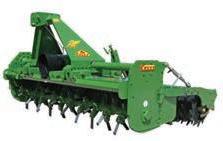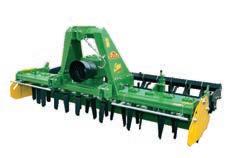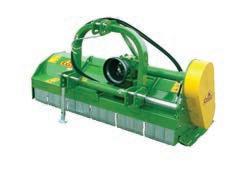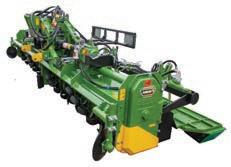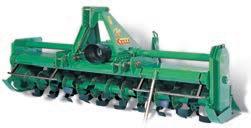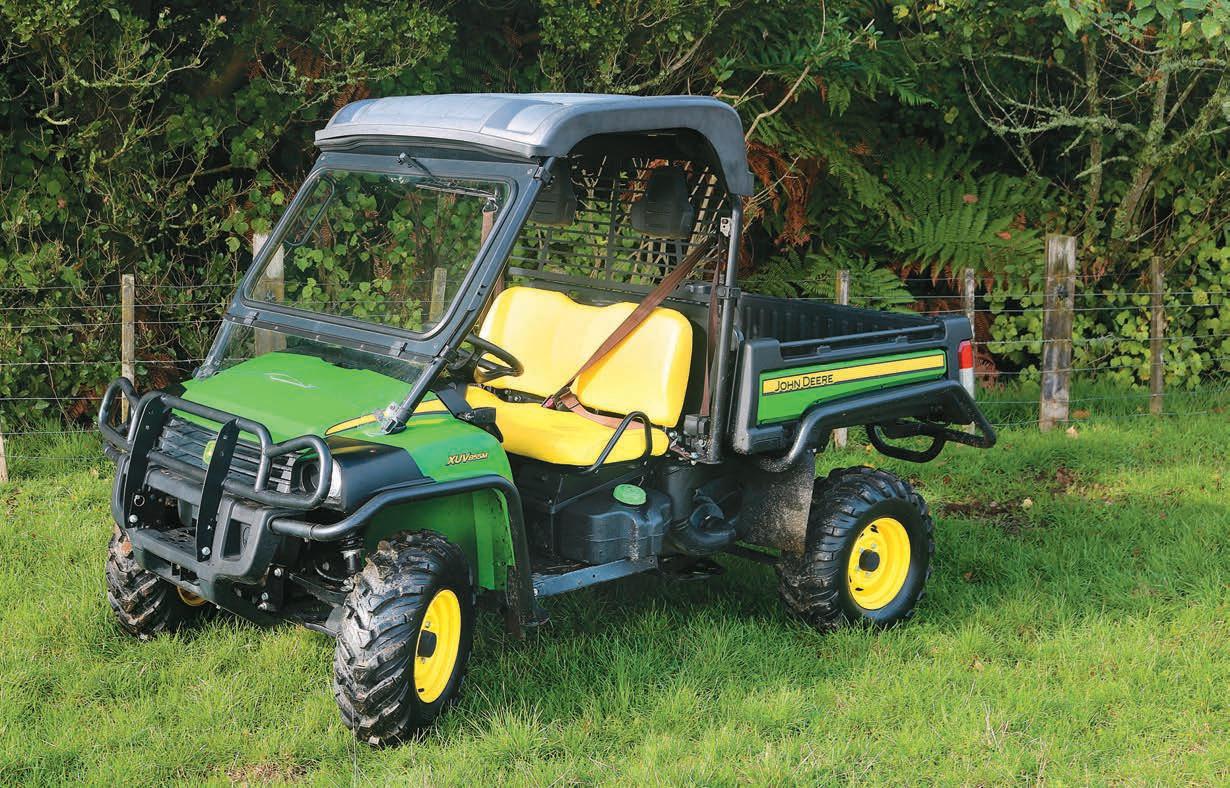
11 minute read
Work Horse
From years spent driving John Deere tractors, Farm Trader NZ’s Willie McKnight has a long-time affinity for all machinery green and yellow. So the opportunity to spend a weekend test driving the
John Deere Gator XUV
855M was no particular hardship
Photos by Oliver Shergold
With a list of farm jobs a mile long waiting to be done, the Gator wasn’t long off the delivery trailer before being put to work on the farm. Like most John Deere designs, this Gator is built to last. First impressions are of brute strength; its wide stance and solid chassis offer plenty of deck space for a variety of farm tasks. With a long wheelbase and low centre of gravity, there is plenty of stability here, which makes it an ideal all-round workhorse. The roll over protection structure (ROPS), or as John Deere calls it, the operator protection system (OPS), adds to the butch appearance and provides a strong base for optional accessories.
HISTORY
John Deere released its first Gator in 1992. The design was based on its earlier (1987) All Materials Transport (AMT) vehicle, which had a small front wheel and four back wheels. Gators first came out as 6x6 or 4x4 and were new and innovative to the market then. The design has continued to evolve but that early reputation as a ‘go anywhere do anything’ machine has remained. Today’s version of the Gator boasts a lot to like. Safety features have evolved significantly; there is an improved centre of gravity, ground clearance has improved along with suspension, and this model, released in 2018, has much to offer.
ENGINE
The Gator is powered by the well-known and long-lasting threecylinder Yanmar motor; this is mounted low in the chassis under the rear cargo deck, giving it a low centre of gravity by putting the weight over the back wheels. Engine cooling is liquid from a large radiator up front with good airflow to it, and a big fan to suck in air if need be. Access to the motor is easy – just tilt the deck with one easy handle on the driver’s side. With the engine being diesel and weighing in at 23hp (17kW), the unit was a little sluggish to get moving initially. This is largely due to the power to weight ratio, but once it gets moving and you put your foot down, it easily gets up to its top speed of 42km/h (depending on load and terrain). If speed is a top priority, other John Deere Gator models are available with higher horsepower. Or you could make the switch to the petrol engine, which offers almost double the horsepower (at 54hp/40kW). The Gator pulls well, particularly in low gear, proving itself with our tandem bike trailer full of hay, which totalled around 500kg, close to its stated towing capacity of 680kg. By the feel of things, I could tell it would perform well even with a bigger load. One thing I did notice early on is that the engine is louder than some other models I’ve driven, but an engine cover would reduce this noise. As with all diesel engines, you can hear and feel the inductive noise from the machine.
TRANSMISSION
Like most side by sides, the John Deere Gator features a continuous variable transmission (CVT). This model runs a double-sided cogged drive belt for added longevity. Fitted with a CVT intake system, the belt temperature is reduced, which improves the overall durability of the drive belt.
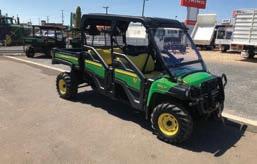

Looking for an
ATV/UTV?
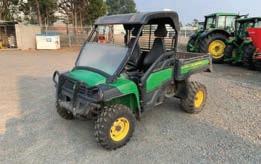
Search for ‘ATV’ or ‘UTV’ on
TradeFarmMachinery.com.au
or type the TA or DIY code shown here into the keyword search field
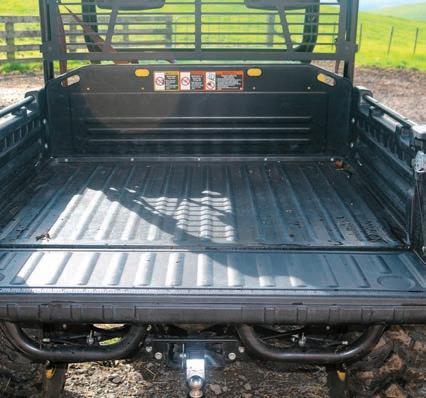
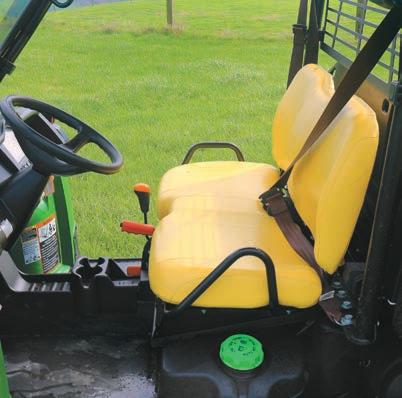
2 3 4
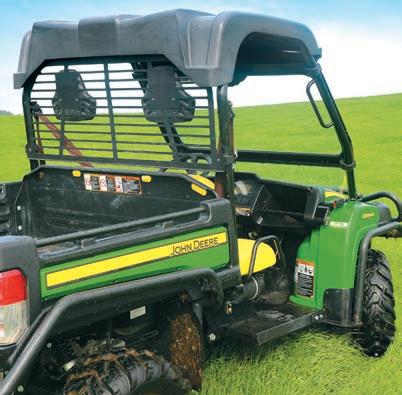
If you’re used to a unit with active descent control or engine braking, one of the first things you’ll notice once behind the wheel is the lack of this feature. If you’re not aware, you could freewheel as you crest a hill or go through a gateway. Once you take this into account, however, you can easily manage it by working the accelerator and brake in unison to keep the CVT belt engaged. This is something a novice or beginner driver should be made aware of. Once you’ve adjusted your driving to this system, it becomes second nature. Dynamic engine breaking is available in other models of the Gator.

CONTROLS
The cockpit of the Gator feels nice and roomy. With an adjustable steering column, upright seating for two people, and two seatbelts, the controls are easy to reach, with three gears (apart from neutral): low, high, and reverse. The brake lever is push button and there’s a manual diff lock lever. For added safety, the seatbelt alarm beeps when your speed reaches over 20km/h – a useful reminder to put your seatbelt on. An alarm also alerts if the hand brake is left on when moving. The central LED display has all the usual features: temperature, revs, speed, fuel gauge, trip meter, odometer, and hour meter. All that’s missing is that handy clock and a horn (although to be fair, phones have replaced clocks these days in most cases). The demo Gator we drove came standard with door nets, which we removed for extra speed while feeding out and hopping in and out of the vehicle regularly. The unit still meets safety standards without the nets, so long as you’re wearing seatbelts. A full or half door is also available as an optional extra. I felt it was easier to get in and out of the Gator with the nets removed when doing a multitude of tasks on the farm. While there’s plenty of headroom with the operator protection system (OPS) design, I did find that the low roof moulding, coupled with the windscreen frame, somewhat impeded an uninterrupted view out of the front window. However, it could just be that my height had me sitting in exactly the wrong place. A different roof or windscreen option would easily fix this. I’m a bit of a pack rat so like plenty of storage to hide away all of my tools and extras. While there are two cup holders, an open glovebox on the passenger side, and a storage container under the driver’s seat, I’d prefer more storage holds. One thing many side by sides don’t give great thought to in the design process is the ease of access for servicing. John Deere ticks all the boxes here, with the 27-litre fuel tank under the driver’s seat and the battery on the passenger side easily accessible just by lifting the seat. The radiator and brake fluid are under the front bonnet, so are nice and simple to access for servicing, and the full engine can be accessed by simply tilting the deck.
LIGHTING
Equipped with two front halogen lights as standard, there were no options for high or low settings on this demo machine. However, provisions for extra lighting are included, enabling each customer to customise their own as per their requirements. A well-placed LED light bar would be the perfect addition to finish off the package.
1. The iconic John Deere Gator XUV 855M 2. The unit comes with door nets and half and full doors are optional extras 3. The bench seat offers plenty of passenger room 4. With the tail gate down, the deck size is ideal for carting bales of hay 5. The practical deck is ideal for a team of farm dogs and fencing supplies
The Gator pulls well, particularly in low gear.
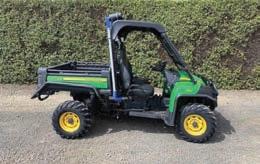
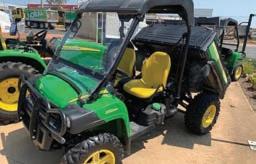
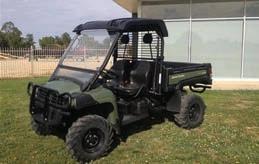

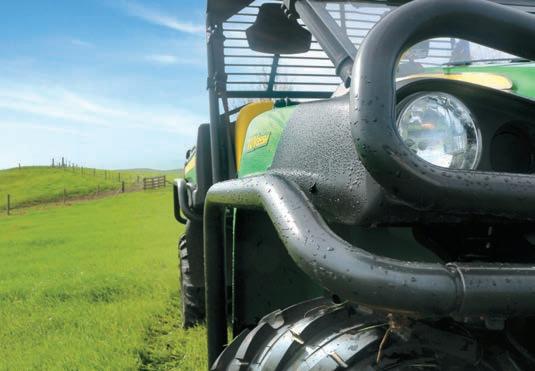
6
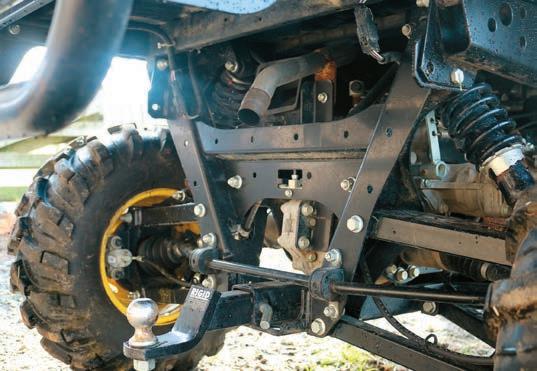
8 7
9
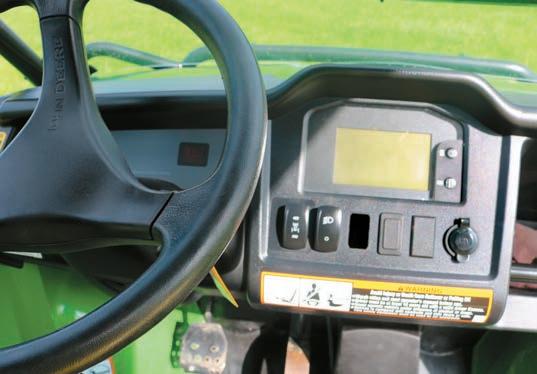
6. Rear suspension is fully independent dual
A-arm with adjustable coils and sway bar 7. Bullbar all round adds to the strong look 8. Accessories such as headrests can be attached with Easy Clips 9. The large central LED display

Specifications
Engine 22.8hp (17kW), four-cycle diesel, liquid cooling system Fuel capacity 27.6L Transmission Continuously Variable Transmission (CVT) with clutch enclosure Deck 1,143 x 304.8 x 1,320mm Deck capacity 454kg
Towing capacity
680kg
Front suspension
Fully independent dual A-arm with adjustable coils
Rear suspension
Fully independent dual A-arm with adjustable coils and sway bar Brakes Front/rear hydraulic disc with twin piston front calipers Wheelbase 2,007mm Dry weight 805kg
Length x width x height
2,992mm x 1,571mm x 1,903 mm
Ground clearance
280mm Hitch Standard two-inch receiver
Build quality Stability and low centre of gravity Generous deck size Placement of tie-down points
Cons
A favourite for me was the inbuilt reverse lights in the corner of the deck. These are useful when reversing for lighting up the way behind, particularly at night with the lights automatically engaging as soon as you start reversing. Also, when the key is turned off, the lights stay on for another 10 seconds, which is handy for gathering your things up or giving you time to shut or lock a shed or gate.
CARGO DECK
At almost 1.2 metres wide and 1.3 metres long, the deck is a practical size. The fact you can take the sides off and make it a flat deck is a bonus and allows for some fairly hefty loads to be tackled. The strong steel deck is plastic-coated with a spray-in liner, which gives excellent protection against the elements and delivers a non-slip surface. The moulded plastic sides have plenty of tie-down points, and there’s also a tie-down top rail. By removing three hex key bolts, the sides can be easily removed to make a flat deck, which is super handy for larger loads. The tailgate comes with a ute-styled centre handle. Strong wire rope on each side holds the tailgate flat, allowing you to easily load or unload, and again extends the deck size. My farm dogs had plenty of room to enjoy a ride around the farm, even with the addition of reels and standards, which didn’t roll around, thanks to the standard non-slip coating. On this demo model, there’s a manual process to tip the deck from the driver’s side. An upgrade is available to allow electric auto tip from the cab.
ACCESSORIES
The John Deere list of accessories, attachments, and implements are impressive. From camo wraps to winches, doors, and a fully enclosed cabin with plush interior, you can style or upgrade your Gator to suit your requirements. The XUV that our local dealer kindly supplied was fitted with full wraparound bull bars, a glass window screen, and wiper (perfect for when the rain set in). It was also fitted with an open back screen and headrests. The attachments are easy to install or uninstall with big clips, which fasten securely, in keeping with traditional John Deere build. The Gator XUV 855M has a convenient plug-and-play wiring system for easily adding attachments such as winches or extra lighting. I liked the nifty fact that the box section tow bar can be quickly removed and fitted on the front of the Gator. Just remove the pin, out it comes, and you can swap it over – perfect for backing a boat or trailer into a tight shed where you need maximum visibility and don’t want the restrictions of backing.
BRAKING/SUSPENSION
The Gator is equipped with good brakes, even when under full load. The four-wheel twin-piston calliper disc brakes offer impressive stopping power. The hand brake is in the driveline and holds extremely well, but just to be fussy, I did miss the usual John Deere park brake in the transmission that I’m used to in the tractors. The combination of a true four-wheel-drive system, mechanical diff lock, and awesome gripping ANCLA XTS tyres, meant that traction was never a problem, even on our steep terrain. Suspension features fully independent dual A-arm with adjustable coils on the front. The same applies to the rear but with the addition of a sway bar, which makes for a stable and comfy ride.
VERDICT
The solid, dependable John Deere build makes this the ideal rough and tumble unit for those looking for a crossover utility. The fact you can choose from so many options, including a full cab, winches, and air conditioning, delivers a versatile unit suited to a variety of tasks, from horses or lifestyle jobs through to everyday farming. The generous deck size is ideal for carrying larger loads and maximising efficiency. As you would expect from a John Deere machine, the quality of the build stands out and should mean this is a machine you can hand on down through the generations. These units are renowned for their long life, and now that I’ve experienced the drive, I can see why. The Yanmar engines are notoriously trouble-free. There’s something to be said for a practical design over anything flashy, which is ideal for the market it’s targeting. There’s nothing unnecessary here to complicate driving or performance; it’s all good solid work horse stuff.

